General Projects
Aircraft Morphing
The field of morphing aircraft is expanding rapidly as research into sensor networks and smart materials advance in unison. This allows for smooth complex shape changes within the aircraft while monitoring the state of the entire structure. typically, morphing is implemented for drag reduction, increased maneuverability, and adaptability but its capabilities can encompass an even wider spectrum. Using smart materials, we aim to minimize weight and reduce the complexity of morphing aircraft designs.
Thus far, our research has focused on quantifying the aerodynamic benefits of morphing with respect to aircraft adaptation to a multitude of different off-design conditions through both aeroelastic simulations and experiments. This includes optimizing the spanwise configurations for both linear and nonlinear aerodynamics and testing the configurations in the wind tunnels at the University of Michigan. Recently, we developed novel methods of integrating multiple smart materials into wing structures to augment tip deflections, actuate over multiple time scales, and achieve complex camber variation. Motivated by avian studies and in concert with several other universities we are currently investigating new morphing shapes to improve efficiency of unmanned aircraft.
Structural Damping
As aerospace structures become lighter and more flexible, vibration levels become an issue. Accordingly, engineers are in a persistent battle to reduce vibrations in the structures we build. While typically harmless, they can cause catastrophic failure and putting civilian lives at risk. In order to mitigate these unwanted vibrations, the structure is damped, frequently by adding rubber-like damping material or transferring the vibrational energy to a separate oscillator designed to vibrate at a specific frequency. This can add substantial mass to the structure which can be undesirable in certain situations. Our research within structural damping aims at minimizing these caveats through new designs and active control by distributing the vibration suppression throughout the structure.
Frequently we employ 3d printed metastructures, a structure where unique combinations of material geometries and properties, are integrated into a host structure on a centimeter to micrometer scale to achieve a specific dynamic response. We focus on achieving this through variable stiffness mass-spring oscillators, actively controlled oscillators using smart materials, and structural mass-spring optimizations in many instances with no additional mass. This includes analyzing the response of the structure in extreme environments such as high temperature and pressure.
Energy Harvesting
While vibrations can frequently be undesirable, engineers can also put them to good use by harvesting kinetic energy. This can be beneficial in many aerospace applications, as these minor structural vibrations can generate enough power for a low-powered on-board sensor. Typically, piezoelectric materials are used as harvesters which convert strain energy to electric energy. By coupling these smart materials with vibrating systems in unique manners, we can more effectively harvest vibrational energy.
Our projects within energy harvesting have focused on a wide variety of topics including piezoelectric grass and a dual harvesting-sensing aircraft spar for gust alleviation. Most recently, our research has delved into broadband energy harvesting over a range of frequencies using multi-stable harvesters. Overall, we frequently use complex geometries such as zig-zag beams, and are able to effectively condense cantilevered harvesters to achieve low-frequency harvesters.
Current Projects
Stability and control of morphing avian wings
Led by Christina Harvey, this research aims to develop a holistic understanding of the aerodynamic stability and control afforded by avian wings while actively morphing their wing joints. With this approach we can identify the most beneficial aspects of avian wing morphing that can inspire highly maneuverable UAVs capable of adapting to variable mission profiles.
Deep Learning for Morphing Control
Led by Kevin Haughn, this research achieved camber morphing control for a multifunctional macro fiber composite airfoil. A simulation was developed through time series modeling to train a controller with state of the art reinforcement learning methods. The learned controller outperformed traditional proportional-derivative control methods in speed and accuracy, providing an opportunity for greater maneuverability in morphing UAVs.
Whiffling-Inspired Roll Control
Some bird species are known to "whiffle," or flip upside down mid-flight, in order to lose altitude. Inspired by the mechanism behind this behavior, Piper Sigrest is leading research to study a novel method of roll control for energy-constrained fixed-wing uncrewed aerial vehicles.



